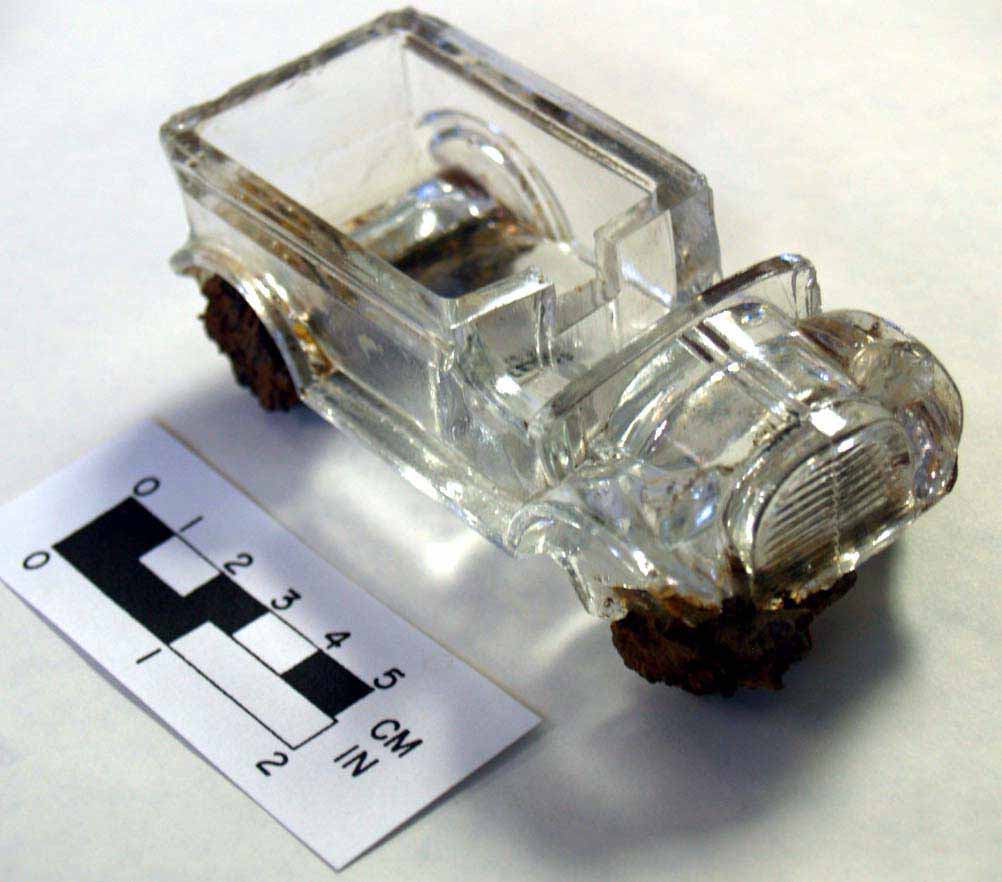NOVEMBER 2013 — ARTIFACT OF THE MONTH
BACK TO HOME…
ARTIFACT OF THE MONTH INDEX…
Glass Candy Container

Man does not live on bread alone, there is also candy!
The archaeological presence of candy is not easily discerned by the archaeologist as much of this “food” was sold by the piece or packaged in paper. Both the candy and its packaging dissolve. In the late nineteenth century and early twentieth century candy began to be packaged in glass containers shaped like toys. These containers were mainly manufactured by a select number of Pennsylvania glass companies until the Great Depression. The artifact is a glass candy container that was recovered from a privy century artifacts that was part of at an archaeological site near Marcus Hook
The first glass candy containers were shaped like Independence Hall and the Liberty Bell in celebration of the Centennial Exposition in 1876 in Philadelphia but by 1900 glass candy containers were being produced in hundreds of different shapes, many, like the object at hand, in the shape of toys. Glass candy containers were manufactured in the shape of people, animals, ships, telephones, buildings, clowns, guns, trains, cars and trucks. They sold in dime stores, at souvenir stands, and even through mail order catalogs like Sears & Roebuck. Production of glass candy containers peaked in the 1920, declined sharply during the Great Depression, and eventually stopped being manufactured in the early 1950s. The glass candy container was ubiquitous, but now is a mostly forgotten portion of children’s lives.
Contributed by Kenneth J. Basalik, Ph.D.
by admin